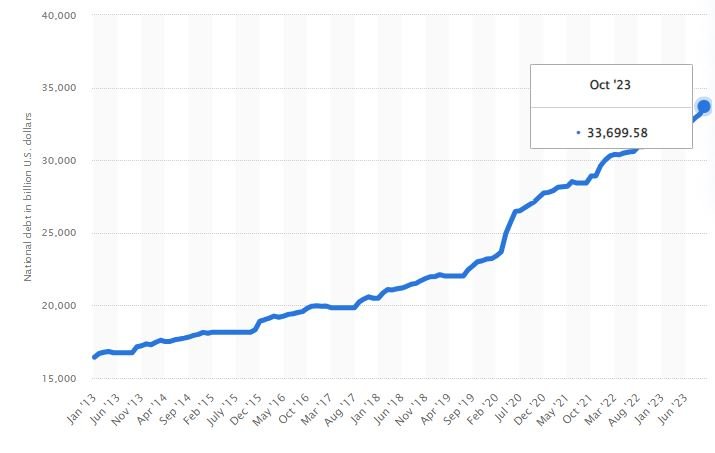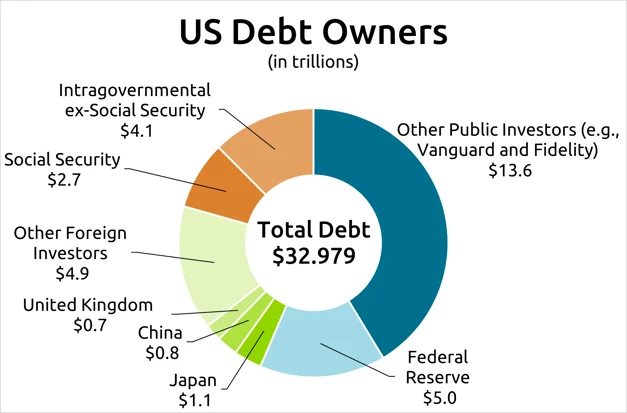1. The Giant Number: What is the U.S. National Debt?
Let’s begin with the figure in the headline. The United States of America owes an astounding $33 trillion as of December 2023, according to the most recent tally. Yes, you heard right, Many people are left wondering how one nation could amass such an enormous debt because of this astounding figure.

2. Who Holds the Debt? Hint: It’s Not Just China.
When we talk about the U.S. national debt, China often takes the spotlight. While China is indeed a major holder of U.S. debt, it’s essential to recognize that a significant portion is owned domestically. The largest chunk is held by U.S. entities, including individuals, corporations, and various government agencies. So, the national debt isn’t just a matter of international relations; it’s also deeply rooted in the domestic financial landscape

3. Debt-to-GDP ratio is at a historic high.
The ratio of the national debt to the Gross Domestic Product (GDP) is a key indicator of a country’s financial health. Currently, this ratio stands at over 122% as of September 2023, exceeding any previous level in U.S. history. This means that the government owes more money than the entire economy produces in a single year.
4. The national debt isn’t just about current spending.
It’s important to remember that the national debt is not simply a product of recent government spending. It represents the accumulation of borrowing over centuries, dating back to the American Revolution. Major historical events like wars, economic recessions, and social programs have all contributed to its growth.
5. Is the National Debt Always a Bad Thing?
While an astronomical national debt might sound like an impending financial apocalypse, it’s important to note that not all debt is inherently bad. Responsible borrowing for productive investments, such as infrastructure projects or education, can stimulate economic growth. The key lies in finding a delicate balance and ensuring that the borrowed funds contribute to the nation’s long-term prosperity.
These five facts provide a basic understanding of the U.S. national debt. However, there are numerous other aspects to consider:
• The composition of the debt: The debt comprises various types of securities, including Treasury bills, notes, and bonds, each with different maturities and interest rates.
• The impact on future generations: The long-term consequences of the national debt on future generations are a major concern, with potential implications for taxes, social programs, and economic opportunities.
• Global context: Comparing the U.S. debt to other countries’ debt levels can provide additional perspective on its relative magnitude.
• Potential solutions: Various proposals and strategies exist for addressing the national debt, ranging from spending cuts and tax increases to economic growth initiatives.
Understanding the national debt is crucial for informed public discourse. By delving deeper into the facts, analyzing diverse perspectives, and exploring potential solutions, we can engage in constructive conversations about the future of the U.S. economy and ensure responsible fiscal management for generations to come.
Additional Resources:

